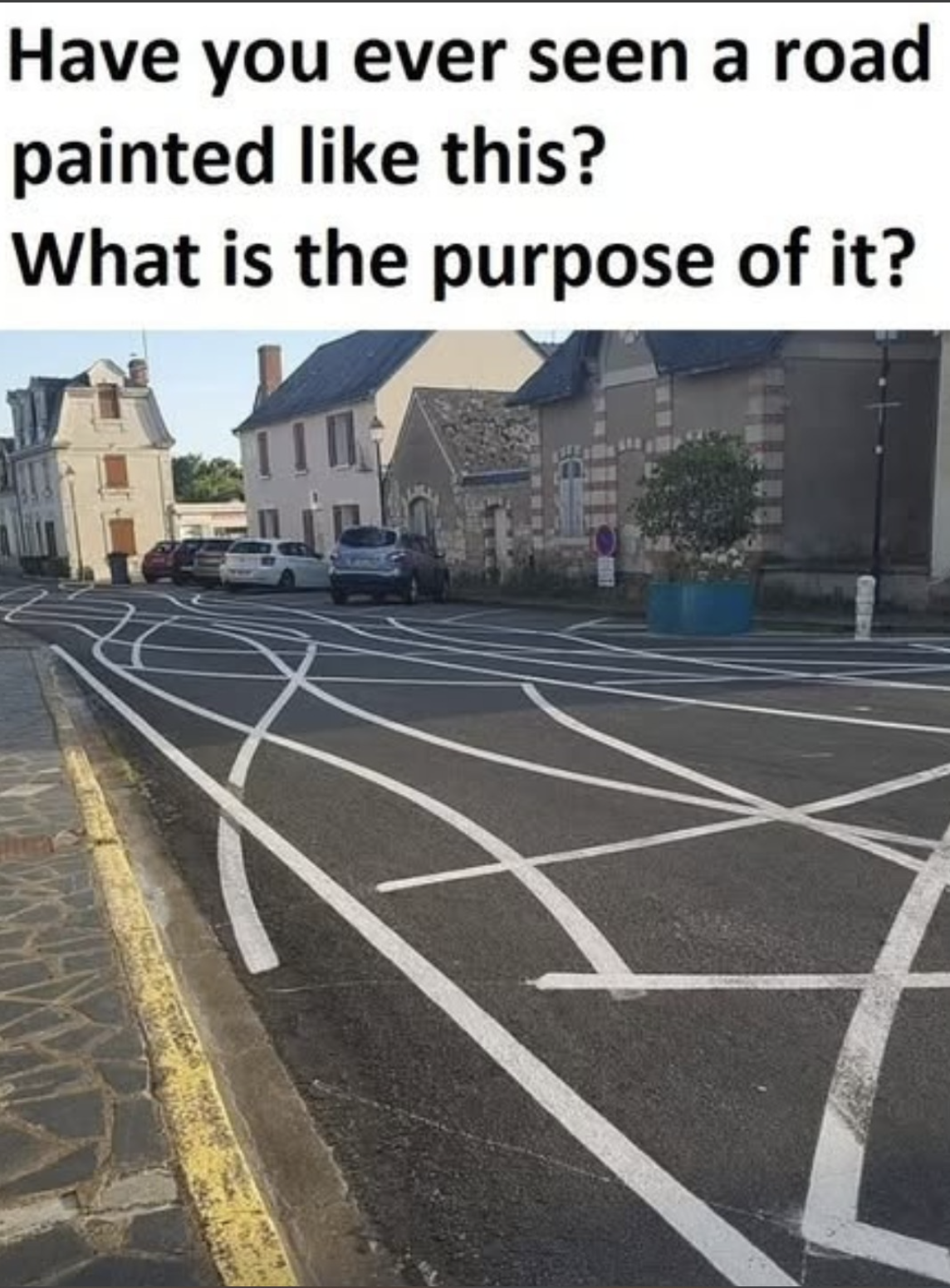Locals worried:
For children walking to school
For elders crossing the street
For pets and cyclists
Traditional fixes — speed bumps, cameras, signs — were either too expensive, too harsh, or ignored entirely.
So the mayor, Audrey Revereault, asked:
“What if we could trick drivers into slowing down — without a single bump or ticket?”
And that’s when the idea came.
🖌️ The Solution: Optical Illusions on the Road
Instead of speed bumps, Bauné painted bold, wavy lines across the asphalt — right before the T-junction.
From a distance, the lines look like ripples in water or waves on a beach.
But as drivers approach, something strange happens.
The brain interprets the curving stripes as a three-dimensional surface — like a bumpy road or a dip in the pavement.
So what do drivers do?
They slow down.
Not because they have to.
But because they think the road is uneven.
It’s optical illusion meets traffic psychology — and it works.
🧠 How It Works: Your Brain on Wavy Lines
The human brain is wired to respond to visual cues.
When we see repeating curves or zigzags on a flat surface, we instinctively think:
“That’s not smooth. I should slow down.”
It’s the same principle behind:
3D crosswalks (painted to look raised)
Zebra stripes that seem to float
“rumble strips” painted on highways
But Bauné’s version is softer.
Calmer.
More artistic.
And unlike speed bumps, it doesn’t damage cars or create noise.
🗣️ Mixed Reactions – But Mostly Praise
Not everyone was on board at first.
Some residents called it:
“Silly”
“A waste of paint”
“Just another mayor’s whim”
But after just a few weeks, something changed.
Speeds dropped.
Near-misses decreased.
Parents felt safer.
And visitors?
They loved it.
Tourists started coming just to see the wavy road.
Taking photos.
Sharing it online.
One traveler called it:
“The most peaceful traffic calming I’ve ever seen.”
🌍 A Growing Trend in Smart, Gentle Design
Bauné isn’t alone.
Across Europe and beyond, towns are turning to artistic road designs to solve traffic issues:
Iceland
3D zebra crossings
Slow drivers in icy conditions
India
Painted speed bumps
Warn drivers where real bumps are missing
Netherlands
Rainbow crosswalks
Encourage caution and joy
These solutions are:
Low-cost
Visually engaging
Psychologically effective
And they prove that good design can change behavior — without force.
🧠 Final Thoughts: Sometimes the Best Way to Slow Down Is to Make You Think the Road Is Bumpy
We rely on rules, signs, and enforcement to control speed.
But in Bauné, they chose something different.
They chose creativity.
They chose quiet psychology.
They chose a squiggle.
And in doing so, they made their village safer — without a single bump, camera, or fine.
So next time you’re speeding down a country road…
Watch out.
The next curve might not be in the road.
It might be on it.
And once you know the trick?
You’ll slow down — not because you have to.
But because your brain says:
“Better safe than bumpy.”
